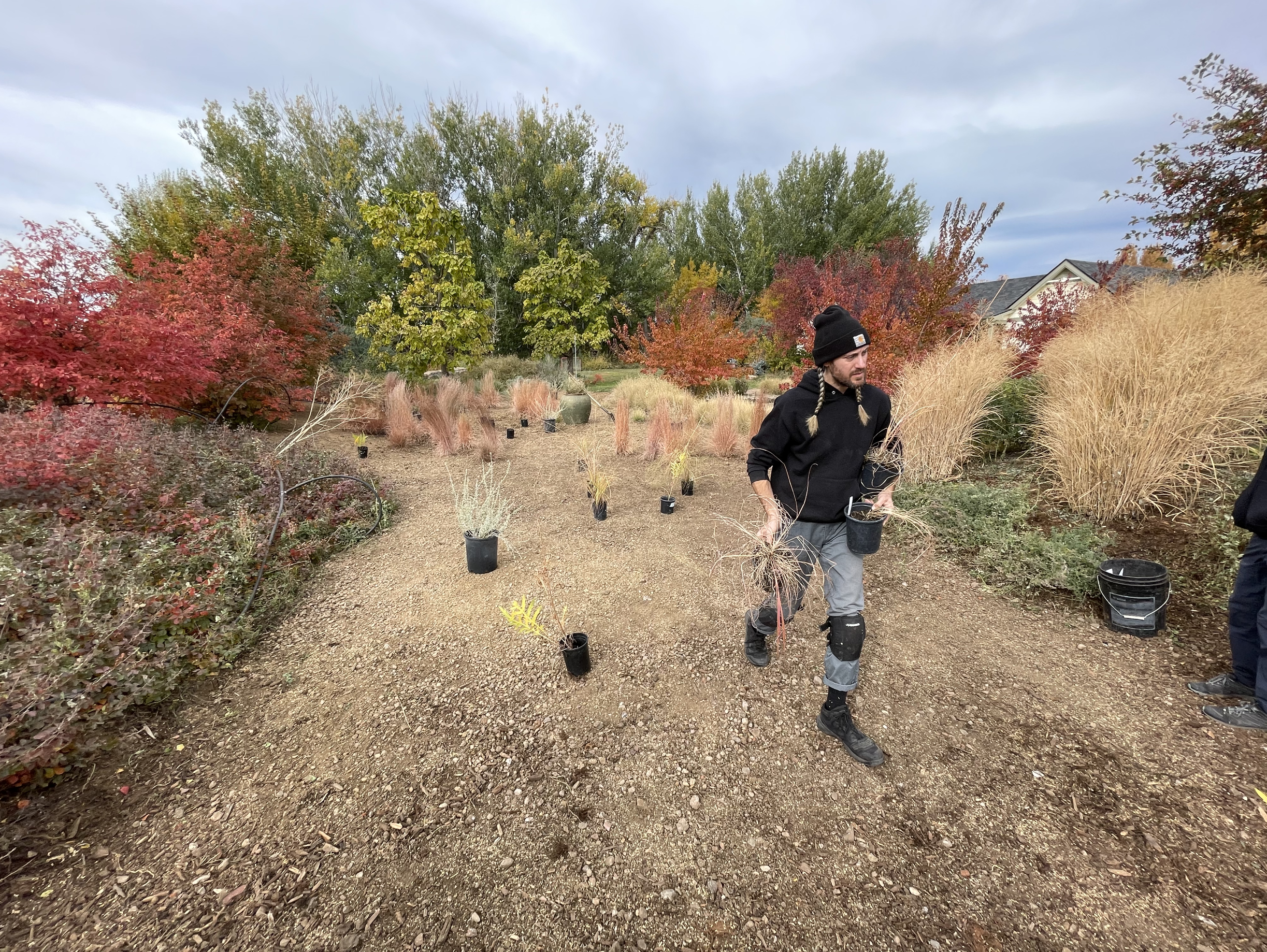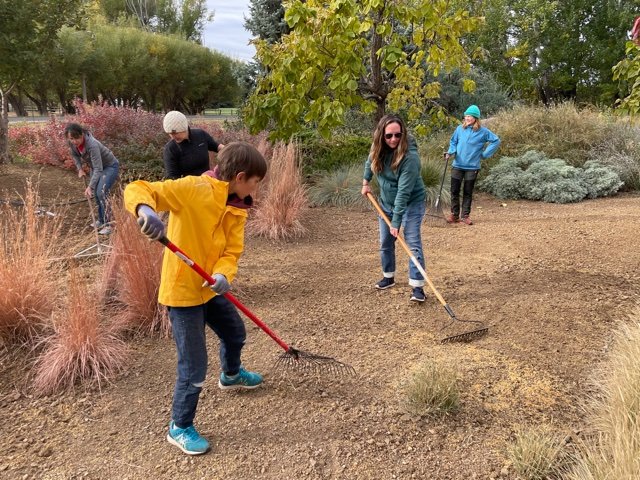*Tree of Life’s Spring 2022 Conference will be hands-on and will detail the seeding process referred to in this blog post. Visit our Annual Conference page to sign up for conference-related emails or scroll to the bottom of this page.
Josephine Streetscape near the Denver Botanic Gardens (DBG). Seed design by Kevin Williams, Horticulturalist at DBG . Photo by Thomas Rainer, Principal Landscape Architect at Phyto Studio.
By Emily Morris
November 1, 2021
Sod covers vast portions of American soil as a bandaid landscape solution, but it requires unsustainable amounts of water and often toxic chemicals in its upkeep. In the Front Range, our natural ground cover appears in the form of diverse and floriferous grasslands. So we pose the question: why not put back what was already there? We’re refining a stewardship and design approach that combines curated grassland seed mixes with designed planting to create intentional and self-sustaining plant communities as a substitute for sod. By sowing grasslands from seed, we can avoid installing water-intensive, expensive, unusable areas of sod; create habitat for pollinators and wildlife; and establish low maintenance and beautiful landscapes that echo the identity of Colorado nature. Here is a glimpse into a Tree of Life seeding day and the methods used to create a diverse grassland from seed.
Our seed mix has been added to wheel barrows full of rice hulls and watered down so that the seed can be evenly spread over the landscape. Photo: Joni Gabriel
For starters, we put together a seed list containing 35 species that combined perennials, annuals, grasses, stress tolerators, competitors and ruderals. This methodology refers to Grime’s Triangle, a model for plant community evolution that informs our seed design for a long-lived, dynamic garden. Here is an overview of the three components of Grime’s Triangle:
COMPETITORS are perennials that tend to take over where there is no stress or disturbance. They spread and often form large clumps.
STRESS-TOLERATORS have survival adaptations for stressful, variable, or deteriorating site conditions. They are meant to fill in where competitors can’t survive—typically perennials.
RUDERALS have short lifespans—annual or biennial—and are known to rapidly produce and spread seed. Ruderals transition throughout the garden as life cycles end and quickly restart from a traveled seed.
Kevin lays out the shrub and grass framework of this grassland design. Photo: Johnny Moore
Second, our hybrid seeding strategy involves planting an architectural framework of shrubs and grasses to serve as the bones of the design. This controlled layout will give the landscape a visual common thread as the seed mix establishes itself around the framework. By using this hybrid approach, we can create landscapes that better appeal to the human psyche since people prefer to see landscapes that have legible patterns. Another way we create pattern legibility is within the bloom colors and shapes which change throughout the seasons.
Once the framework has been laid, it’s time to spread the seed! We sow our first layer by spreading and raking the seed/rice hull mix into the unamended soil. This area was used for parking in the past, so it’s nutrient quality is low. However, the selected seeds prefer Colorado’s clay, alkaline soil since they grow here naturally.
Volunteers spread seed to learn about the process. Photo: Johnny Moore
Volunteers rake the seeds into the soil. Photo: Joni Gabriel
To finish the process, we planted our bulbs and one gallon pots which naturally disturbs the soil and helps the seeds germinate. Afterwords, we sprinkled and raked in another layer of seeds. Fall is an ideal time for seeding since many species need to undergo a cold stratification process (exposure to cold and moist conditions) for proper germination.
When spring comes back around, we’ll be adding more seed to this area (those seeds that don’t require cold stratification).
Kevin digs in bulbs after the first layer of seeding. Photo: Johnny Moore






